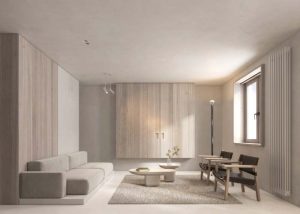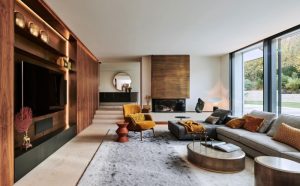
With Minimalist Modern Living Spaces at the forefront, this paragraph opens a window to an amazing start and intrigue, inviting readers to embark on a storytelling casual formal language style filled with unexpected twists and insights.
Minimalist design principles focus on simplicity and functionality, while modern classics add a touch of timeless elegance to living spaces. Explore the blend of these elements and how they shape the aesthetic appeal of contemporary homes.
MINIMALIST DESIGN

Minimalist design in modern living spaces revolves around the key principles of simplicity, functionality, and clean lines. By focusing on these aspects, minimalist design can transform a room into a sleek and sophisticated space that exudes a sense of calm and order.
Enhancing Aesthetic Appeal
- Minimalist design often utilizes a neutral color palette, such as whites, grays, and blacks, to create a sense of cohesion and serenity in a room.
- The use of simple furniture with clean lines and geometric shapes can enhance the visual appeal of a space, making it feel more open and airy.
- Incorporating natural materials like wood and stone can add warmth and texture to a minimalist room, creating a harmonious balance between simplicity and elegance.
Importance of Decluttering and Simplifying
Decluttering plays a crucial role in minimalist design as it helps create a sense of space and allows key design elements to shine. By simplifying the decor and keeping only essential items, a room can feel more organized and visually appealing.
MODERN CLASSICS

The concept of modern classics in interior design revolves around timeless pieces that have withstood the test of time and continue to be relevant in contemporary spaces. These pieces often feature clean lines, simple forms, and high-quality materials, making them versatile and adaptable to various design styles.
Iconic Furniture Pieces
- Eames Lounge Chair and Ottoman: Designed by Charles and Ray Eames in 1956, this iconic piece combines comfort and style with its molded plywood shell and leather upholstery.
- Barcelona Chair: Created by Ludwig Mies van der Rohe and Lilly Reich in 1929, this sleek and luxurious chair features a stainless steel frame and leather cushions.
- Noguchi Coffee Table: Isamu Noguchi’s 1947 design features a sculptural base in natural wood with a glass top, adding an artistic touch to any space.
Incorporating Modern Classics
Modern classics can be seamlessly integrated into minimalist living spaces by focusing on a less-is-more approach. Opt for one or two statement pieces that stand out while keeping the rest of the furnishings simple and functional. Mix modern classics with contemporary elements to create a balanced and harmonious look. Consider the scale and proportion of the pieces to ensure they complement the clean aesthetic of a minimalist design.
MODERN LIVING
Modern living has significantly influenced interior design, shaping the way we perceive and interact with our living spaces. The concept of modern living emphasizes functionality, simplicity, and minimalism, creating a harmonious balance between aesthetics and practicality.
Characteristics of a Modern Living Space
- Sleek and clean lines: Modern living spaces often feature clean lines and geometric shapes, creating a sense of order and simplicity.
- Open floor plans: Modern design encourages open spaces that flow seamlessly from one area to another, promoting a sense of connectivity and spaciousness.
- Neutral color palettes: Neutral colors such as white, gray, and beige are commonly used in modern living spaces to create a calming and versatile backdrop for furniture and decor.
- Minimalist furniture: Furniture in modern living spaces is typically simple, with clean lines and no unnecessary ornamentation, focusing on functionality and comfort.
- Abundance of natural light: Modern living spaces often incorporate large windows and skylights to maximize natural light, creating a bright and airy atmosphere.
Technology and Sustainability in Modern Living Spaces
Technology plays a significant role in modern living spaces, with smart home features, integrated sound systems, and energy-efficient appliances becoming increasingly common. These technological advancements not only enhance convenience but also contribute to a more sustainable lifestyle by reducing energy consumption and waste.
Sustainability is a key focus in modern living design, with eco-friendly materials, energy-efficient systems, and green building practices being prioritized to minimize environmental impact.
In conclusion, Minimalist Modern Living Spaces offer a harmonious balance between simplicity and sophistication, creating a serene environment that resonates with modern sensibilities. Dive into this design trend to transform your living space into a stylish sanctuary.
Questions and Answers
How does minimalist design enhance the aesthetic appeal of a room?
Minimalist design focuses on clean lines, clutter-free spaces, and a neutral color palette, creating a sense of calm and sophistication that enhances the visual appeal of a room.
What are some iconic furniture pieces considered modern classics?
Examples of modern classic furniture include the Eames Lounge Chair, Barcelona Chair, and Noguchi Coffee Table, known for their timeless design and enduring popularity.
How does technology influence modern living spaces?
Technology plays a significant role in modern living spaces through smart home devices, integrated entertainment systems, and innovative appliances that enhance convenience and comfort in daily life.






